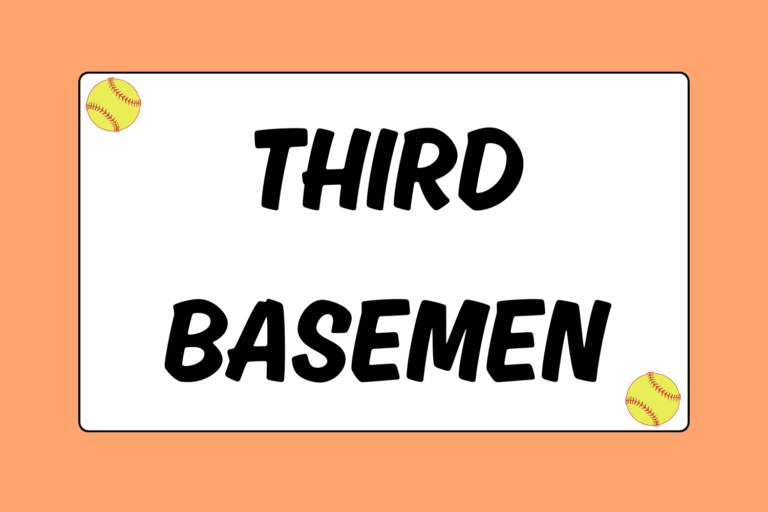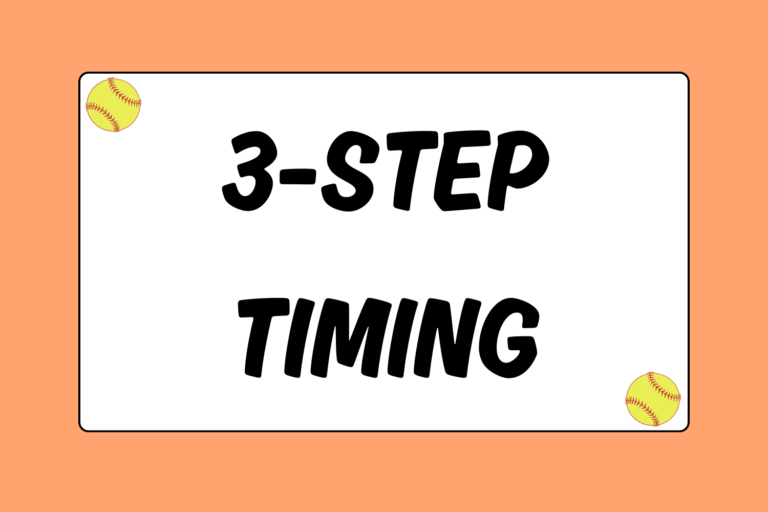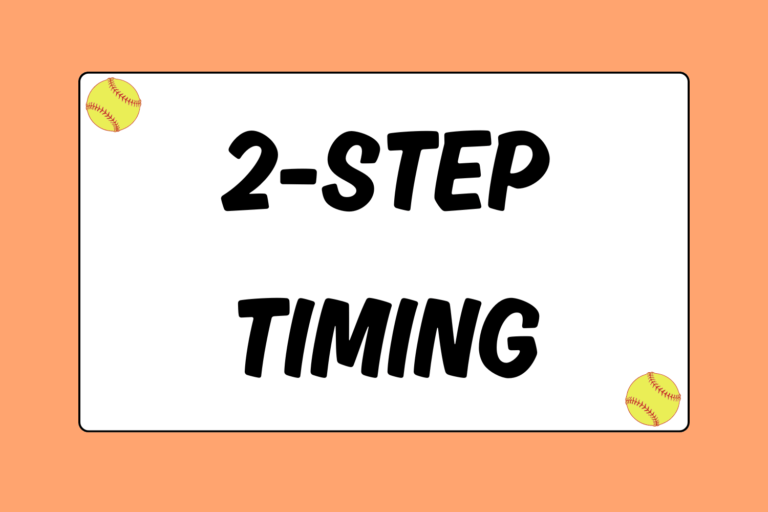To truly enjoy the competition of a sport, certain guidelines, rules, and regulations must be set. As with any sport, the regulations that were originally established for softball have expanded and been altered through the years. Sure, the basic concept is to hit the ball, throw the ball, and catch the ball, but for newcomers to the game, the specifics can get confusing.
An Overview of the Game
Each team in a softball game starts nine players (10 players in some youth and slow-pitch leagues). The game is broken up into innings, during which, each team plays both offense and defense. A regulation game consists of seven innings. An inning starts with the home team on defense and the away team on offense.
The offensive team attempts to score runs, while the defensive team attempts to record outs. Once three outs have been recorded, the teams switch positions. The home team then plays offense, attempting to score runs before the away team can record three outs.
One inning is completed after each team makes three outs. The team that has the most total runs after seven innings are completed is the winner. If the score is tied, play continues, with each extra inning functioning as sudden death. The eighth inning begins with a runner on second base. The runner is the player who recorded the last out as a batter in the previous inning. Each team still gets a chance on both offense and defense, but if a team scores more runs after one complete inning, that team is the winner.
Positions & Lineups
On defense, the players occupy nine positions. There are five infield positions (pitcher, catcher, first base, second base, third base, and shortstop), and three outfield positions (left field, center field, and right field). In some youth and slow-pitch leagues, four outfielders are used (left field, left-center field, right-center field, and right field).
On offense, the nine starters form a strategically arranged lineup, which determines the order in which each player bats. Many softball organizations allow the use of a designated hitter. This means that one player who is not among the defensive starters may bat in the place of a defensive player. In many cases, the designated hitter bats for the pitcher.
The players take turns batting according to the lineup, and once every player has batted, the order starts over from the top. It is against the rules to bat out of order. Substitutions may be made at any time, but once a player has been removed from the game, they cannot return (unless specific league rules allow it). Teams often substitute their batters, base runners, and pitchers in order to give other players a chance to play or to achieve favorable matchups. These replacements are referred to as pinch-hitters, pinch-runners, and relief pitchers, respectively.
Pitching & Defense
In softball, play starts when the pitcher delivers a pitch. The pitcher must be in contact with the pitcher’s rubber when he or she throws the ball. For men’s softball, the pitcher may take a step back before or after his hands are brought together. For women’s softball, both feet must remain in contact with the mound at all times prior to lunging forward. If a pitcher wants to step off the rubber while in the middle the pitching motion, he or she must step off backwards before separating both hands.
For every at-bat of a game, a “count” is kept in order to keep track of how many balls and strikes have been thrown (for example, one ball and two strikes, or 1-2). The strike zone is an area that reaches from the batter’s knees to chest, and spans the width of home plate.
The home plate umpire determines whether each pitch crossed through the strike zone, and so strike zones tend to be somewhat subjective. If the pitcher throws a pitch that misses the strike zone, it is called a ball. If she throws a pitch inside the strike zone, or if the batter swings and misses, or if the batter hits the ball into foul territory, it is called a strike.
There are several ways to record an out on defense:
- Strike out: After three strikes, the batter is out. However, a batter cannot strike out on a foul ball. If she hits a foul ball with two strikes, the count remains the same.
- Tag out: When the ball is in play, any defensive player may tag a base runner when she is off the base to record an out.
- Catch: If the batter hits a pitched ball in play, and any member of the defense catches it in the air, then the batter is out. A runner on base may attempt to advance to the next base once a catch has been made by “tagging up.” However, the runner does so at the risk of being tagged out.
- Force out: If the batter hits a pitched ball in play that is not caught in the air, the defense may field the ball and touch first base (or more likely, throw it to the first baseman, who then touches first base) before the batter reaches the base to record the out. Also, if there are runners on first base, first and second base, or all three bases, the runners must advance if a batted ball touches the ground (they are “forced”). Therefore, the defense can tag a base in front of a runner for a force-out. It is possible for the defense to record multiple force-outs on the same play. This is called a double play.
Scoring
The home plate area consists of home plate, a left-hand batter’s box and right-hand batter’s box (on separate sides of home plate), and a catcher’s box (directly behind home plate). The offensive player stands in one of the batter’s boxes, while the catcher squats down behind home plate, and the umpire stands just behind the catcher.
In order to score a run, a batter must safely touch all four bases (in a counter-clockwise direction) and home plate. The player doesn’t need to touch all four bases during one play, but the player does need to proceed around the bases in the correct order. Once she reaches a base, she may choose to stay there, and as long as she stays on the base she cannot be tagged out. Therefore, in order to score a run, the offensive team typically must get multiple players on base safely in order to advance them around the diamond and touch home plate to score a run.
There are several ways that a batter may reach base safely:
- Single: The batter hits a pitched ball into fair territory, and the defense is unable to catch it in the air. If the batter makes it to first base without being tagged with the ball or before the defense can make a force-play at first base, then the batter is safe with a single.
- Double: The batter hits a pitched ball into fair territory, and the defense is unable to catch it in the air. If the batter makes it to second base without being tagged with the ball or before the defense can make a force-play, then the batter is safe with a double.
- Triple: The batter hits a pitched ball into fair territory, and the defense is unable to catch it in the air. If the batter makes it to third base without being tagged with the ball or before the defense can make a force-play, then the batter is safe with a triple.
- Home run: The batter hits a pitched ball into fair territory, and the defense is unable to catch it in the air. If the batter touches all three bases and makes it to home plate without being tagged with the ball or before the defense can make a force-play, then the batter is safe with a home run. In addition, if the batter hits a pitched ball that lands beyond the designated outfield fence, it is an automatic home run. She is allowed to jog around the bases and touch home plate, and any runners who were on base are also allowed to score.
- Base on balls: If the pitcher throws four pitches out of the strike zone (as determined by the home plate umpire) before the batter hits the ball fair or strikes out, then the batter is awarded first base.
- Hit by pitch: If a pitched ball strikes the batter on any part of batter’s body, the batter is awarded first base (unless an umpire determines that the batter intentionally moved in order to get hit).
- Catcher’s interference: If the batter’s bat makes contact with the catcher while she attempts to swing at a pitch, the batter is awarded first base.
- Defensive error: If the batter is able to safely reach base as the result of a defensive player’s mistake, then the play is called an error. An error has effectively the same result as a hit, but officially it is a different type of play.
- Dropped third strike: If a batter swings and misses at a pitched ball for the third strike, but the catcher drops the ball or it bounces away, the batter may attempt to run to first base. If the batter reaches first base before the catcher can tag her or make a force-out, then the batter is safe.
- Fielder’s choice: If the batter hits a pitched ball into play, and the defense chooses to tag or force-out another base runner instead of the batter (thereby allowing the batter to reach base safely), then it is considered a fielder’s choice. This is a less desirable way to reach base, because an out is recorded in the process.
Other Resources
Now that you have the basics, you’re ready to start playing. There are, however, dozens of intricacies to the rules of softball not listed here. Additionally, many softball organizations have their own tenets, so be sure to check your league’s rule book. Complete, detailed versions of the official rules can be found at the following websites:
- International Softball Federation
- Amateur Softball Association
- United States Specialty Sports Association Fastpitch
- National Collegiate Athletic Association
- National Federation of State High School Associations





